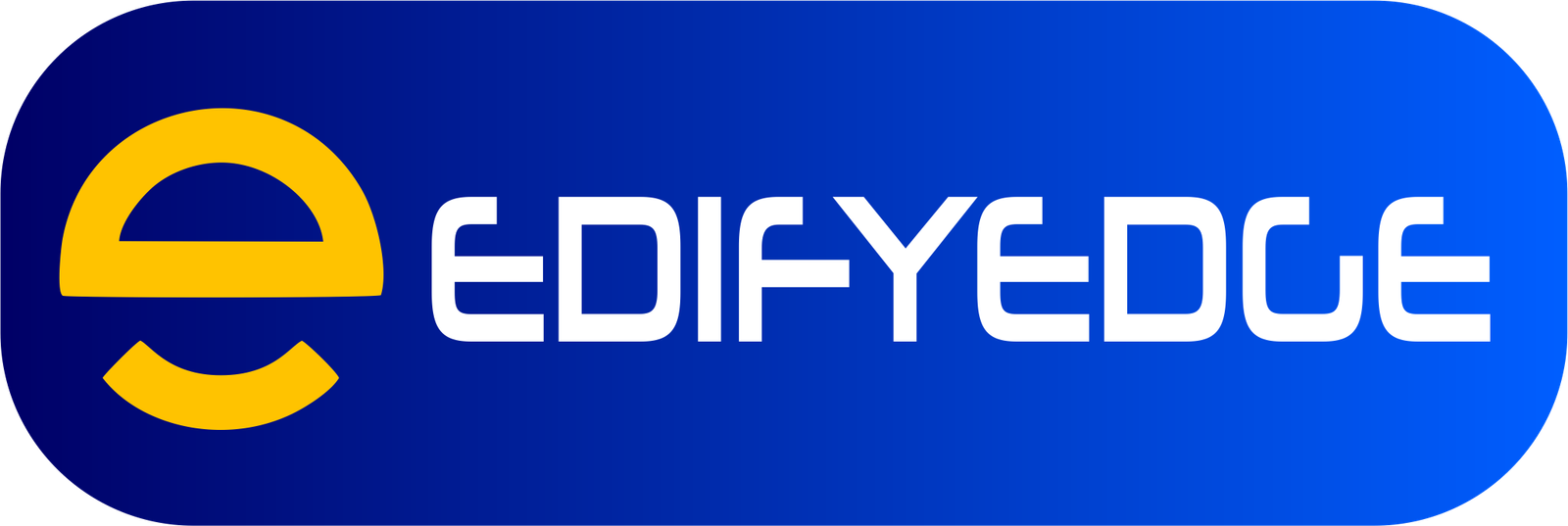What is a Business Loan?
A business loan is a type of financing that provides capital for various business purposes. It involves borrowing a sum of money from a lender, such as a bank, credit union, or online lender, and repaying it over a specified period, typically with interest.
Business loans come in different forms, including:
-
Term Loans: These are lump-sum loans that are repaid over a fixed term, usually ranging from a few months to several years. Term loans can be used for various purposes, such as purchasing equipment, financing expansions, or covering operational expenses.
-
Lines of Credit: A line of credit provides businesses with a revolving source of funds that can be drawn upon as needed, up to a predetermined limit. This type of loan is useful for managing cash flow gaps or seizing unexpected opportunities.
-
Equipment Financing: This type of loan is specifically designed to help businesses acquire essential equipment, machinery, or vehicles. The equipment itself often serves as collateral for the loan.
-
Commercial Mortgages: These loans are used to finance the purchase or renovation of commercial real estate, such as office spaces, retail stores, or industrial facilities.
Common uses of business loans include startup costs, working capital, inventory financing, debt refinancing, and business expansion or acquisition. By accessing external funding, businesses can pursue growth opportunities, manage cash flow challenges, and invest in their long-term success.
Determining Your Loan Needs
Before applying for a business loan, it’s crucial to determine your specific financing needs. Start by evaluating how much funding you require and for what purpose. Common reasons for seeking a business loan include working capital, equipment purchases, real estate acquisition, debt refinancing, or business expansion.
Accurately calculate the amount of funding needed to achieve your goals. Underestimating your financing requirements could leave you short of funds, while overestimating could result in unnecessary debt and interest payments.
Next, consider the desired loan term, which is the length of time you have to repay the loan. Shorter terms typically have higher monthly payments but less interest paid over the life of the loan, while longer terms have lower monthly payments but more interest overall.
Additionally, assess your eligibility for different loan types based on factors such as business age, annual revenue, credit score, and collateral. Lenders have varying requirements, so understanding your qualifications can help narrow down suitable options.
By thoroughly assessing your funding needs, loan purpose, preferred term, and eligibility criteria, you can better identify the most appropriate loan product and lender for your business.
Traditional Bank Loans
Applying for a business loan at a traditional bank or credit union is a common path for many entrepreneurs. These established financial institutions offer a range of loan products, including term loans, lines of credit, and commercial mortgages. The application process typically involves submitting detailed business and personal financial information, as well as a solid business plan.
Requirements:
- Established business history (usually at least 2 years)
- Strong personal credit score (typically 680 or higher)
- Collateral (such as real estate, equipment, or inventory)
- Detailed business plan and financial projections
Pros:
- Competitive interest rates
- Longer repayment terms
- Ability to borrow larger amounts
- Established relationship with the lender
Cons:
- Stringent qualification criteria
- Lengthy application and approval process
- Extensive documentation required
- Collateral may be required to secure the loan
To apply for a bank loan, you’ll need to gather all necessary documents, including tax returns, financial statements, business licenses, and legal contracts. Many banks have online portals or dedicated loan officers to guide you through the process. It’s essential to present a compelling case for your business’s viability and ability to repay the loan.
Online Lenders
Online lending platforms have emerged as a popular alternative to traditional bank loans for small businesses. These online lenders offer a streamlined application process, faster approval times, and more flexible lending criteria compared to banks. However, they typically charge higher interest rates and fees.
Online lenders use technology and data analytics to evaluate loan applications quickly, often providing funding within a few days or weeks. This speed and convenience make them an attractive option for businesses in need of fast capital. Many online lenders have relaxed requirements, considering factors beyond just credit scores, such as annual revenue, cash flow, and industry trends.
To apply for a loan from an online lender, businesses typically need to provide basic information about their operations, financials, and the loan purpose. The application process is usually completed online, and decisions are made rapidly using automated underwriting models.
While online lenders offer accessibility and speed, their loans often come with higher annual percentage rates (APRs) than bank loans, sometimes reaching into the double digits. Borrowers should carefully review the terms, fees, and overall cost of online loans before accepting an offer.
It’s essential to research and compare multiple online lenders to find the best rates and terms for your business needs. Reputable online lenders should be transparent about their lending practices and provide clear disclosures on loan costs and requirements.
SBA Loans
The U.S. Small Business Administration (SBA) offers several loan programs designed specifically for small businesses. These loans are not issued directly by the SBA but rather by approved lenders, with the SBA providing a guarantee on a portion of the loan amount. This guarantee reduces the risk for lenders, making it easier for small businesses to access funding.
One of the most popular SBA loan programs is the 7(a) loan program. This program offers loans up to $5 million for various purposes, including working capital, equipment purchases, real estate acquisitions, and debt refinancing. To qualify, businesses must meet certain size standards, demonstrate a need for the loan, and have a reasonable ability to repay.
Another SBA loan option is the 504 loan program, which is designed for major fixed asset purchases such as real estate or equipment. This program involves a partnership between a certified development company, a private lender, and the small business borrower. The lender provides a portion of the financing, the development company provides a second portion, and the borrower contributes a down payment.
The SBA also offers microloans up to $50,000 for small businesses and startups that may not qualify for traditional financing. These loans are issued through intermediary lenders and can be used for working capital, inventory, supplies, furniture, fixtures, machinery, and equipment.
To apply for an SBA loan, businesses typically need to provide a comprehensive business plan, financial statements, personal and business credit reports, collateral, and other documentation. The application process can be lengthy, but the SBA’s guarantee and favorable terms can make these loans an attractive option for many small businesses.
Alternative Lenders
If you’re having trouble qualifying for a traditional bank loan or SBA loan, alternative lenders can provide another avenue for securing funding. These non-traditional sources have become increasingly popular, especially for startups and small businesses. Some common alternative lending options include:
Crowdfunding: Platforms like Kickstarter and Indiegogo allow you to raise funds from a large pool of individual investors or backers who support your business idea or product. Crowdfunding campaigns typically offer rewards or perks in exchange for contributions.
Peer-to-Peer (P2P) Lending: P2P lending platforms connect borrowers with individual investors willing to fund their loans. Interest rates can be competitive, but requirements may be more flexible than traditional lenders. Popular P2P lenders include LendingClub and Prosper.
Merchant Cash Advances: With a merchant cash advance, you receive an upfront lump sum of cash in exchange for a percentage of your future credit card sales or revenue. This option can provide quick access to funds, but effective interest rates tend to be higher.
Requirements for Alternative Lenders: While requirements vary, alternative lenders generally have more relaxed criteria than banks. However, you may still need to provide business plans, financial statements, credit scores, and revenue projections. Some lenders focus more on your business’s overall health and cash flow rather than just your credit score.
Alternative lending sources can offer faster funding and more flexible qualifications, but be sure to carefully review the terms, fees, and interest rates, as they can sometimes be higher than traditional options.
Comparing Lenders
When seeking a business loan, it’s crucial to compare multiple lenders to find the best fit for your needs. Here are some key factors to consider when evaluating lenders:
Interest Rates: Interest rates can vary significantly between lenders, so it’s essential to compare the annual percentage rate (APR) and understand how it will impact your overall borrowing costs. Generally, traditional banks offer lower interest rates, but their eligibility requirements are stricter.
Fees: Lenders may charge various fees, such as origination fees, processing fees, or prepayment penalties. Carefully review these fees and factor them into your overall cost calculations.
Loan Terms: The loan term, which is the length of time you have to repay the loan, can also vary among lenders. Shorter terms may have higher monthly payments but lower overall interest costs, while longer terms can provide more manageable monthly payments but higher total interest costs.
Eligibility Requirements: Lenders have different eligibility criteria, such as minimum credit scores, time in business, and revenue thresholds. Evaluate your qualifications against each lender’s requirements to determine which ones you’re most likely to be approved for.
Comparing Multiple Options: Don’t settle for the first lender you come across. Shop around and obtain quotes from at least three to five different lenders, including traditional banks, online lenders, and alternative lenders. This will allow you to compare rates, terms, and overall costs to find the most favorable option for your business.
Remember, the lowest interest rate or the most attractive term may not always be the best choice. Consider the overall package, including fees, repayment terms, and any additional services or resources the lender provides. Ultimately, the right lender should offer a loan that aligns with your business’s financial goals and repayment capabilities.
Loan Application Process
The loan application process typically involves submitting various documents and financial information to lenders for review. Common documentation required may include:
- Business plan and executive summary
- Personal and business tax returns
- Financial statements (income statements, balance sheets, cash flow statements)
- Bank statements and credit reports
- Legal documents (business licenses, contracts, leases)
- Collateral information (real estate, equipment, inventory)
Lenders will thoroughly evaluate your application through a process called underwriting. They’ll assess your creditworthiness, cash flow projections, industry trends, and the overall risk of lending to your business. Strong financials, a solid business plan, and adequate collateral can improve your chances of approval.
The approval timeline can vary significantly depending on the lender and loan type. Traditional bank loans may take several weeks or months for underwriting and approval. Online lenders and alternative financing options often have more streamlined processes, potentially providing approval within days or weeks. However, faster approval times may come with higher interest rates or fees.
Be prepared to provide any additional information or documentation requested by the lender during the application process. Prompt responses and open communication can help expedite the approval decision. If approved, carefully review and negotiate the loan terms before accepting the offer.
Tips for Getting Approved
Building a strong credit profile is crucial when applying for a business loan. Lenders want to see a track record of responsible borrowing and repayment. Pay all bills on time, keep credit card balances low, and check your credit reports regularly for errors.
Lenders will scrutinize your financial projections to gauge your ability to repay the loan. Provide realistic and well-researched revenue and expense forecasts, supported by market analysis and historical data, if available. Demonstrate a solid understanding of your industry and a clear path to profitability.
Collateral, such as real estate, equipment, or inventory, can increase your chances of approval by providing security for the lender. The more valuable the collateral, the more favorable the loan terms may be. However, be cautious about pledging personal assets, as you could risk losing them if your business struggles.
A comprehensive business plan is essential for most loan applications. It should outline your business model, market analysis, competitive advantages, management team, and growth strategies. A well-crafted plan instills confidence in lenders and showcases your preparedness and commitment to success.
Using Loan Funds Wisely
Taking out a business loan is a major financial decision that should be carefully considered. Once you’ve secured funding, it’s crucial to use the loan proceeds strategically to maximize their impact on your business’s growth and profitability. Here are some tips for using your loan funds wisely:
Invest in Revenue-Generating Activities
The primary purpose of a business loan should be to fuel growth and increase revenue. Consider investing the funds in areas that will directly contribute to your bottom line, such as expanding your product or service offerings, enhancing your marketing and advertising efforts, or upgrading your equipment or technology to improve efficiency and productivity.
Manage Debt Responsibly
While taking on debt can be a necessary step for business growth, it’s important to manage it responsibly. Develop a realistic repayment plan and stick to it. Avoid using loan funds for non-essential expenses or personal use, as this can quickly lead to unmanageable debt levels.
Build a Strong Revenue Stream
Use a portion of your loan funds to invest in strategies that will help you build a strong and sustainable revenue stream. This could include diversifying your customer base, developing recurring revenue models, or exploring new markets or distribution channels.
Improve Cash Flow Management
Effective cash flow management is crucial for any business, especially when dealing with loan repayments. Consider using a portion of your loan funds to implement or upgrade your accounting and financial management systems, streamline invoicing processes, or negotiate better terms with suppliers to improve your cash flow position.
Invest in Long-Term Growth
While it’s important to focus on immediate revenue generation, don’t overlook the importance of long-term growth and sustainability. Consider allocating a portion of your loan funds to initiatives that will position your business for future success, such as research and development, employee training and development, or strategic partnerships and acquisitions.
By using your loan funds wisely and investing in revenue-generating activities, managing debt responsibly, building a strong revenue stream, improving cash flow management, and focusing on long-term growth, you can maximize the impact of your business loan and set your company on a path to sustainable success.



